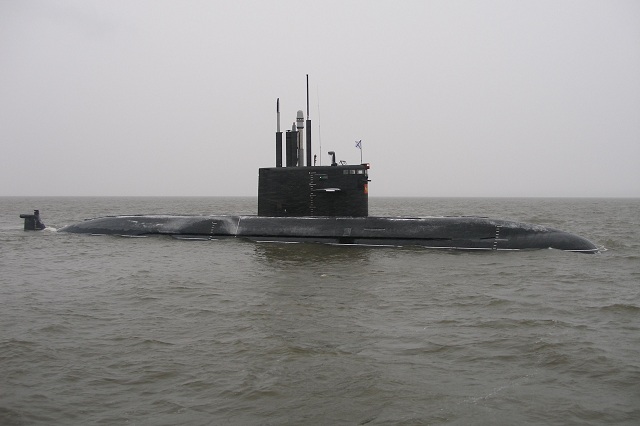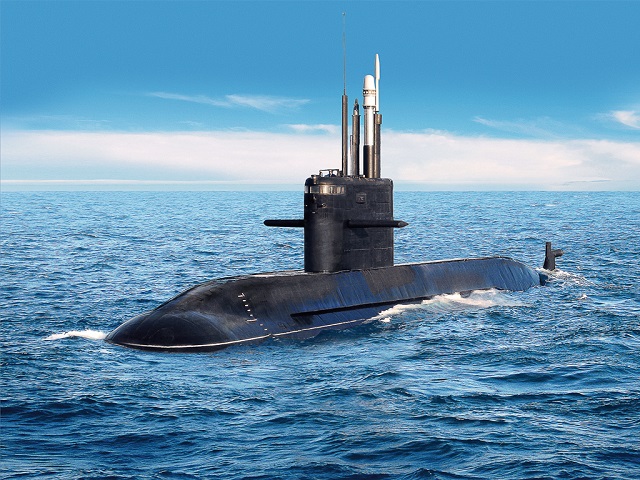|
|
|||
 Lada class Diesel Electric Submarine (SSK) Project 677 Lada class Diesel Electric Submarine (SSK) Project 677 |
|||
|
|
|||
| Rubin has made significant progress over the past few years developing an AIP system for submarines. First a technology demonstrator and then a shore-based test facility were built. The tests on it have been completely completed, and the Russian Navy’s requirements have been met. Preparations are underway for the next stage of tests. Details of the program are not disclosed for reasons of security. At the same time, the developers of the domestic AIP openly state that their installation has a number of significant advantages over its Western counterparts. "The operating principle of our AIP has been recognized the most appropriate across the world, since both our German and French colleagues switched to this type, but our design bureau started this work much earlier. We have an edge here, which will be embodied in an advanced project for the Indian Navy with the help and participation of Indian enterprises," the Rubin CEO said. The victory in India is very important for bringing the new product to the world market. Foreign contracts, added to State Defense Order, will make it possible to quickly pay back the costs incurred for research and development work, increase the size of the production series and reduce the cost per unit. Many importing countries are interested in AIP submarines, but they want to get a ready-made, proven system. If Rosoboronexport succeeds in persuading our partners in military and technical cooperation in the advantages of domestic shipbuilders’ products, then Rubin, Admiralty Shipyard and its subcontractors can count on numerous contracts. This will allow them to remain in the market and continue developing the national school of underwater shipbuilding. The Indian military are closely following all the latest achievements of Russian sailors and shipbuilders. They are especially interested in St. Petersburg, as this ship is proposed as a prototype in the tender for Project 75i. Igor Molchanov, Chief Designer of non-nuclear submarines at Rubin, explains: "We say that the Project 677 diesel-electric submarine is a prototype for the Amur 1650. I confirm that all the main tests of the lead ship have been completed. There remained only a small scope of inspections related to the sonar system." As is known, St. Petersburg is equipped with a prototype of the Lira sonar system developed by the Elektropribor Central Research Institute. In terms of performance, it is far superior to the series-built MGK-400 Rubicon-family sonar systems used in SSKs of previous Projects 636 and 877. "Since a really unique sonar system is installed aboard St. Petersburg, all efforts are focused today on carrying out its comprehensive testing in completely different conditions," continues Molchanov. "The system is operable and has substantiated all its claimed characteristics. However, since hydrology is complex and changing, a large scope of work is done for a variety of hydrological conditions that may be encountered in the Oceans of the World. I emphasize that it’s not about functional demonstration of the sonar - because there is no longer any doubt about it. It’s about a set of certain statistics that will allow using this sonar system with a given effectiveness under completely different conditions." It is the Lira, together with the small dimensions of the ship and extremely low-noise SED-1 main permanent-magnet motor (such a motor was used for the first time on the Russian submarine), that makes the Project 677 boat a "hunter" for foreign submarines. The 533mm torpedo tubes are adapted for firing the Kalibr strike cruise missiles as well. St. Petersburg conducted its first missile launches in the fall of 2016. The submarine is capable of firing a salvo from all six tubes, while a quick loader enables the whole available weapon load (18 units) to be fired at the enemy in a matter of minutes. This makes the boat formidable for any enemy, including an aircraft carrier strike group. Among the missile versions, there are also the 3M-14 land-attack missiles, which were already used by the Project 636.3 SSK Rostov-on-Don and Krasnodar to destroy IS ground targets in Syria. Although the tests of the lead boat took a long time, their completion suggests that our Navy has got a lethal combatant unit, fully prepared for batch production, the Zvezda TV channel writes. © Copyright 2017 TASS. All rights reserved. This material may not be published, broadcast, rewritten or redistributed. |
|||
Project 677 lead submarine St. Petersburg passed all Russian Navy tests
- Posted On











